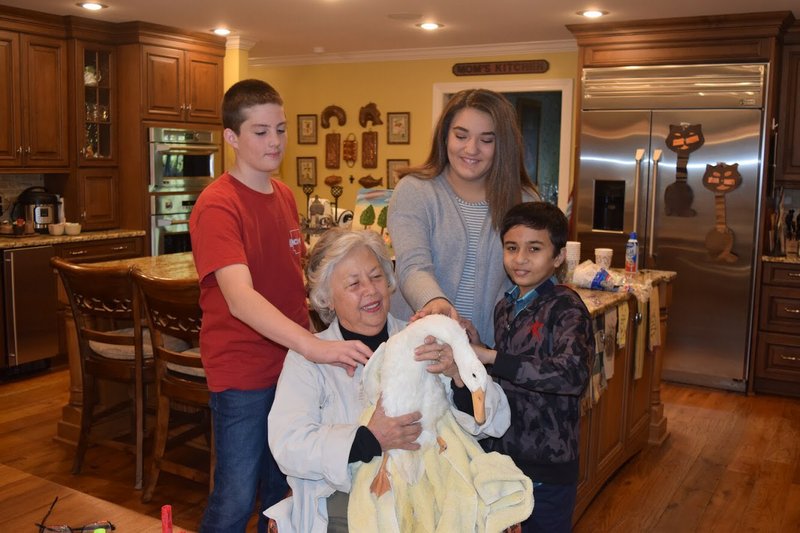A duck who lost one of his feet shortly after he hatched can now run and swim alongside his peers, thanks to three northeast Arkansas eighth-graders.
Patsy Smith, an Arkansan who took in the bird and appropriately named him Peg, believes a turtle chewed his foot off, The Associated Press reported.
As the now-8-month-old Indian runner duck grew, the leg became more irritated, Smith said.
In September, three eighth-graders at Armorel High School saw a Facebook post from Smith saying she was looking for a prosthetic for Peg, according to a report they wrote on the project.
Click here for larger versions
Photos by Armorel High School EAST and Patsy Smith
Photos by Armorel High School EAST and Patsy Smith
The students — Abby Simmons, Darshan Patel and Matthew Cook — are participants in the school’s 3D printing classroom program, which is provided by Environmental and Spatial Technology Inc., a teaching model that started in Greenbrier in 1996.
The eighth-graders said they reached out to Smith and got to work. They first used software to model, size and build the foot, their report stated.
Getting it right took more than 30 tries, with the students making several adjustments to account for the way Peg's species of duck bend their knees. Peg had also adapted to walking on his damaged leg "kind of like us walking on our heel," their report said.
Each try took between three and four hours to print, according to the report. The students stayed after school and worked over Christmas break, Armorel School District Superintendent Jennifer Barbaree said in a statement.
"If it wasn't the correct fit, they had to go back to the drawing board: troubleshoot, design, print," Barbaree wrote. "Their dedication to this project was amazing."
The students created the models with the 3D printer and software on their own after two training sessions, lab facilitator Alicia Bell said.
“They worked diligently every day for months to solve a real problem in their community,” Bell told Arkansas Online in an email. “It was not an easy process, but they used critical thinking skills and a lot of trial and error to make the model just right for Peg.”
The final product has a support adjacent to the brace to allow Peg to stand, walk and run with his foot flat on the ground.
"We are trying to make it just right, so he can run around like other ducks,” the students wrote in their report.
